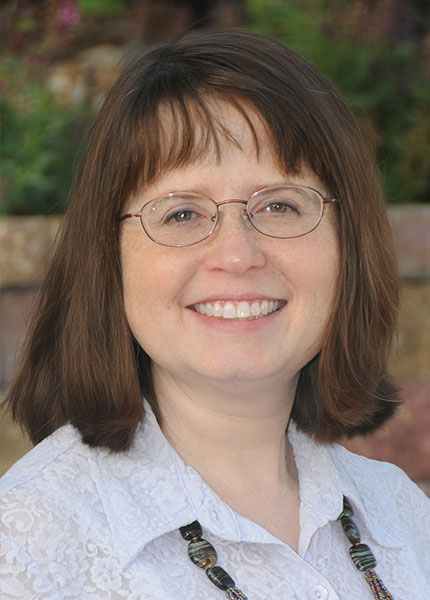
-by Connie Rossini
“The Spanish bishops note that people often ask them about authentic Catholic spirituality as opposed to Eastern meditation techniques. We read: “We want to offer criteria to discern which elements of other widespread religious traditions can be integrated into a Christian praxis of prayer to aid ecclesial institutions and groups to provide paths of spirituality with a well-defined Christian identity, responding to this pastoral challenge with creativity and, at the same time, with fidelity to the richness and depth of the Christian tradition” (no. 6).
They remind us of the adage, lex orandi, lex credendi, which translates roughly as “the Church believes as she prays.” If we are to maintain our faith in this post-Christian culture, and help others to do so as well, it is vital that we pray as Christians. Indulging in practices from other religions – no matter what our intent – may distort our views of God, the human person, and the goal of life. We cannot just co-opt practices from other traditions.
Certain theological truths underlie all Christian prayer. The bishops highlight the uniqueness of the Incarnation. Jesus alone is both fully God and fully man. Thus, any spirituality or spiritual practice that minimizes his role, making him into simply an example of how we all have the divine within us, is opposed to Christianity. The bishops also reject the idea that we cannot know the truth about God. Jesus came to reveal God to us. He is the one way to God. He and his words are truth.
Finally, they write, “It is important to note that in our culture, the Christian idea of salvation has been replaced by the desire of immanent forms of happiness, material welfare, and the progress of humanity” (no. 10). We will ultimately find these things to be empty. When that emptiness yawns before us, it’s easy to instead look for happiness in personal wellness. Then our focus turns inward, instead of outward to God. We become concerned with self, rather than the other. This danger, as we will see, is present in all forms of Eastern (non-Christian) meditation.
In reading documents like this, I sometimes long to see a list of problematic practices. It would make discernment and teaching about prayer so much easier! But the bishops of Spain, like the Congregation for the Doctrine of the Faith in On Some Aspects of Christian Meditation, give us instead principles by which to judge whether a given practice is compatible with Christian prayer. Thus, they teach us about authentic Christian prayer at the same time that they warn against error. They account for new practices that may arise in the future. They expect us to examine prayer and meditation practices in light of these principles.
And yet, they did decide to focus in on perhaps the biggest current fad in both secular and Christian circles respecting meditation: mindfulness. The bishops write, “In many spheres of our society, the desire to find inner peace has favored the diffusion of meditation inspired by Zen Buddhism” (no. 11). Critics could rightly point out that Zen is only one strand of Buddhism, and that mindfulness, for example, which is referenced in a footnote, is not particular to Zen. Neither do some of the other popular meditation techniques come from Zen. But this is the term the Spanish bishops chose. Perhaps such usage is common in Spain. Whatever the case, it’s important to look beyond this imprecision.
The Spanish bishops hit directly at mindfulness, as well as other forms of Eastern meditation, when they say, “The reduction of prayer to [Eastern] meditation and the absence of a you as its end, turn this practice into a monologue that begins and ends in the subject itself. The Zen technique consists in observing the movements of one’s mind to calm the person and bring them into union with their own being. Understood this way, it can hardly be compatible with Christian prayer, in which the most important thing is the divine You revealed in Christ” (ibid.).
This passage contains two important points. First, Buddhist meditation is not directed toward anyone outside oneself. Therefore, instead of the dialog that should comprise prayer, it remains a monologue. It begins and ends with oneself. The second point digs deeper. Buddhist techniques consist of passively observing one’s thoughts. Typically, the practitioner cultivates a non-judgmental awareness of his thoughts, remaining distant from them intellectually and emotionally. These techniques calm one’s mind and help one connect with oneself. Christian prayer, in contrast, seeks connection with God, especially in the person of Jesus. The Spanish bishops say that these differences make Eastern meditation and Christian prayer incompatible.
The mental stillness found in Eastern meditation brings a sense of peace, but it also can cause one to disengage from the world, instead of intervening to change things for the better. “Therefore, if a person is satisfied with a certain inner serenity achieved through this method and confuses it with the peace that only God can give, it would become an obstacle to the authentic practice of Christian prayer and the encounter with God” (no. 12). It fosters complacency with one’s spiritual state, instead of moving the practitioner to grow in virtue or a desire to know God. One thinks that passivity is enough.
Finally, Buddhist practices create a non-dualistic attitude toward reality. In other words, they blur the distinctions between oneself and the world, “between the sacred and the profane, between the divine and the created” (no. 13). They end in pantheism, seeing everything as God, rather than revealing “the personal face of the Christian God.” “When deity and world are confused, and there is no otherness, any kind of prayer is useless” (ibid.). To whom would one pray?
Clearly, Buddhist meditation can obstruct the intimacy with God through Christ, which is the goal of Christian prayer. My Soul Thirsts makes one more assertion about the possible ill consequences of Christians practicing Buddhist meditation.”
Love,
Matthew

